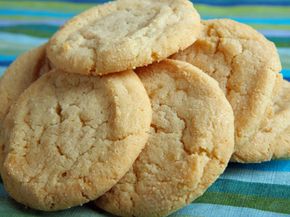The modern sugar cookie is one of the latest incarnations of a portable treat that's been making tea and snack time an occasion for generations. It may seem like the unimaginative half-brother of the much-ballyhooed chocolate chip cookie, but the sugar cookie has a long history and a distinguished pedigree. For the cookie purist, there's nothing more refined and elegant than that buttery blend of sugar and cake that makes the sugar cookie a handful of goodness.
Another Happy Accident
Advertisement
For cookie aficionados with an on-the-go lifestyle, sugar cookies are a portable feast. They're as at home in a lunchbox as they are on a dessert cart, but convenience probably wasn't the reason cookies were first invented. Like many good things, cookies were probably first discovered by accident. They may well have been the brain child of a busy Middle Eastern baker around the seventh century who decided to sell the small batter cakes he used to test the temperature of his cooking oven. Eliminating waste by selling these portable, tasty mini-cakes caught on and a revolutionary sugar-based creation was born.
A Sugar Cookie by Any Other Name
Of course, the first sugar cookies weren't called by that name. When word started spreading throughout Europe in the 17th century about these tasty desserts, and later when they were introduced to the Americas, some entertaining terms were employed to describe these small treats. After all, this child-sized indulgence deserves a few whimsical appellations like jumbles, jumbals, crybabies, plunkets and gemmels. Early cookie recipes that probably morphed into the modern sugar cookie were called gimblettes in France and cimbellines in Italy, too. These weren't the only names given to small cookie-like, sugar cakes, but they'll give you an idea of the creative diversity people were beginning to employ to personalize these miniature baked goods.
It's the Sugar
Although the texture of early sugar cookies varied from soft and chewy to firm or downright hard, the use of sugar in these confections remained a constant. Sucrose, the sugar used in most baking, typically comes from sugar beets or sugarcane, and sugar makes a big difference in the finished cookie that comes out of your oven. Sugar helps make baked goods lighter and softer. As granulated sugar dissolves, it causes dough or batter to spread, too. The coarser the sugar granules are, the slower they'll dissolve. Fine sugar granules will create a flatter, crisper cookie, while large granules will result in a chubbier, chewier cookie.
Since sugar cookies are all about the sweetness and texture, paying close attention to the type and quantity of sugar you're using will help you craft a perfect sugar cookie every time.
Today's Sugar Cookies
When you drag out a baking sheet and start looking for your cookie cutters, keep in mind that old-time sugar cookies weren't decorated with silver balls or colored sugar crystals. In fact, some of the first sugar cookie recipes may have called for boiling the dough before baking it. Dough was rolled, cut into narrow strips, tied in a knot, and then boiled and baked. The result was a cross between the modern bagel and a cookie. Old style sugar cookies were often tough and dry, too. This made them portable and long-lasting.
Today you can make soft, scrumptious cookies in minutes, either from scratch or using any of a number of packaged mixes or frozen dough preparations. Want to make your sugar cookies special? Why not imprint them with unique, detailed scenes or designs using a cookie stamp? Unlike traditional cookie cutters, these die blocks transfer intricate patterns to sugar cookies that you can then embellish with food paints. Want to make your creation more portable? Bake a stick into the base for a unique sugar cookie that you can enjoy to the last crumb without ever getting your fingers dirty. Now, that's a 21st century cookie.
Did You Know? About 171 million tons (154 million metric tons) of raw sugar will be made from sugarcane and sugar beets worldwide in 2009.
Advertisement
